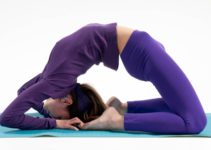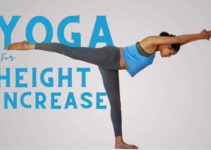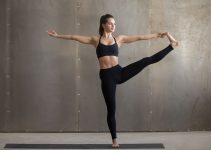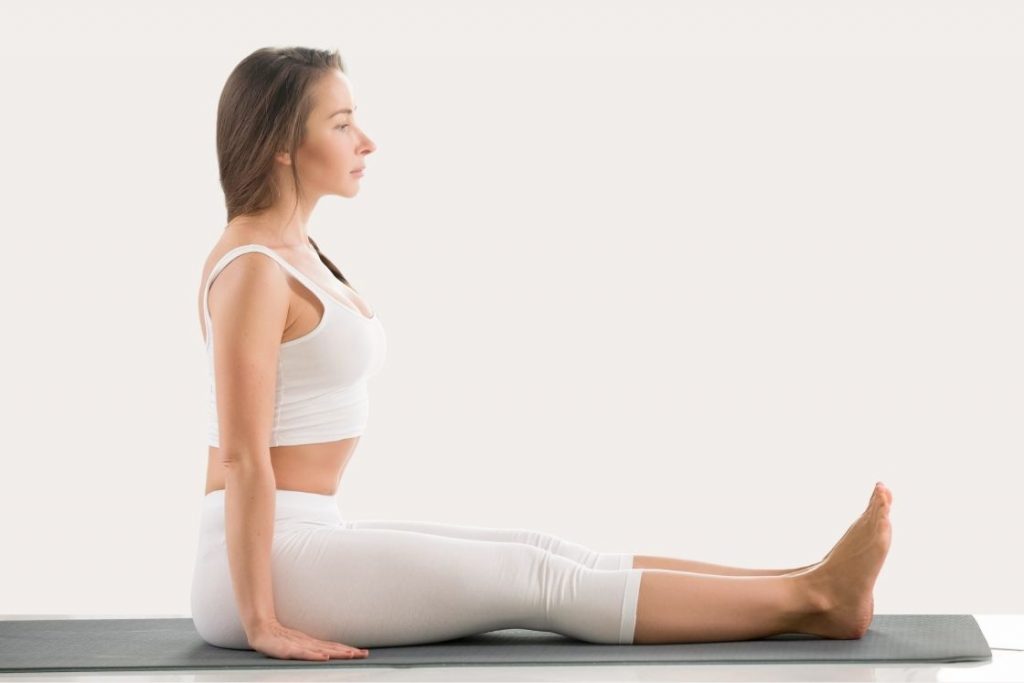
Dandasana is the great core strengthening seated asana in which legs are stretched forward. Usually, it’s practiced as a warm-up yoga pose to leap into the deeper practices of asanas.
In appearance, dandasana or staff pose may look easy and simple but it is quite intensive, strength-building workout for the hips, legs, abdomen, chest, and back. Therefore dandasana is considered a basic beginner pose.
Meaning
Dandasana is Danda + Asana. Spine refers to Danda or stick, which remains straight as staff and asana meaning pose. Dandasana interprets that position of the body where our spine remains perpendicular to the flexed feet.
Firm and flexed legs in dandasana support the whole truck so it’s also called Base Pose. This asana demands an erect posture with a right angle at the pelvis.
Dandasana is also known as a seated version of the Tadasana or Mountain Pose. As Tadasana is a foundation of all the standing poses, in the same way, Dandasana is base or foundation for seated or twisted asanas.
Sritattvanidhi, a 19th-century south Indian treatise, uses Dandasana name for a different pose where the body held straight and supported by a rope.
Dandasana Practice Guide
To do Dandasana, go through below points for safe and easy practice.
Contraindications
- People with the condition of sciatic nerve avoid intense leg stretching in Dandasana. However, mild stretching can be done long as it is not worsening the condition.
- Avoid practicing Dandasana if one is having any back and wrist injury. The straightening of the spine requires lower back balance, which further needs to be assisted by hands.
Preparatory Poses
- Palm Tree Pose (Urdhva Hastasana)
- Standing spinal twist (Katichakrasana)
- Standing Forward Bend (Uttanasana)
- Downward-Facing Dog (Adho Mukha svanasana)
Dandasana Steps
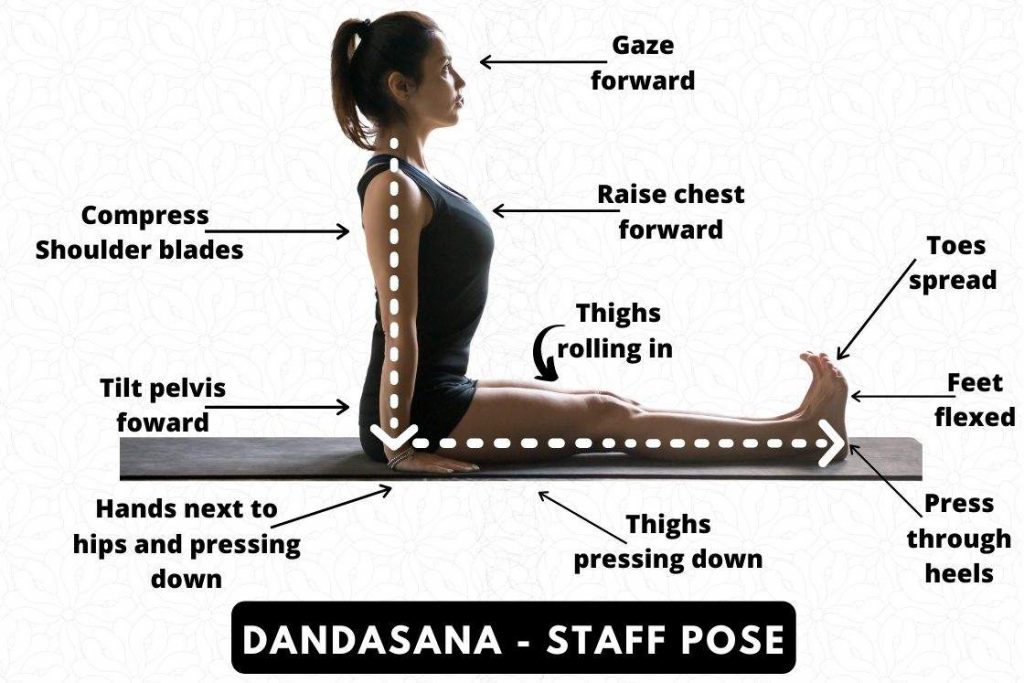
- Start with sitting erect on the mat, legs together, and outstretched in front of your torso.
- place your hand slightly behind the hips; this will relax your shoulder along with spinal support.
- Adjust your hips a little so you sit over the front of sitting bones. Then press your thighs firmly on the floor and rotate them towards each other without loosening the softness of abs muscles.
- Flex your feet, while heels pressing against the mat and fingers pointing upward.
- Now, lengthen your torso from the tailbone to the shoulder simultaneously the legs lengthening from tailbone to the heels.
- While your ankles are flexing and pressing out through the heels, lift your rib cage, raise your sternum, and broaden your clavicles.
- This is the final position of Dandasana. Gaze forward and hold the posture for one minute.
Release
Maintain the Dandasana position for a minimum of 30 seconds to 1 minute. However, one can raise the time period as if getting better at this.
Slowly relax your legs, lower and upper back, neck, and writs. Bring your legs back into the cross-legged position. Relax your body and breathe gently.
Precautions
- Do not let your legs sway outwards, keep them straight and flexed. This ensures stability.
- Always micro bend your leg to prevent the hyperextension of the knee.
- Avoid any kind of overstraining on critical region spinal, inner thigh, etc.
- Tighten hamstrings and cold muscles might hinder full stretch. So, it’s better not to overstrain those regions of rigidity. Listen to your body here.
Beginners Tips
- Beginners with rough and tough body structure practice normally. Do not try to accomplish pose forcibly. It might tear connective tissues.
- Avoid eating prior to the practice. Dandasana involves the engagement of abdominal muscles, which could affect digestion.
- Equalize your weight on both hips. Do not lean along either side of the body.
Props and Modifications
- Tight hamstring restricts the thighs mobility. So, one can use 8 to 10 pounds of sandbags over it for their touching of the ground.
- The curve of the back can be easily eradicated by the use of a folded blanket or blocks underneath the sitting bone. Elevation due to this will assist in the posture.
- For alignment, one can take the support of the wall. Keep in mind that your sacrum and the scapulae are touching the wall, and not lumbar back or the back of the head. You can put a small rolled-up towel between the wall and the lumbar.
Follow Up Poses
- Upward Plank Pose (Purvottanasana)
- Seated Forward Bend (Pascimottanasana)
- Weighing Scale Pose (Tolangulasana)
Dandasana Benefits
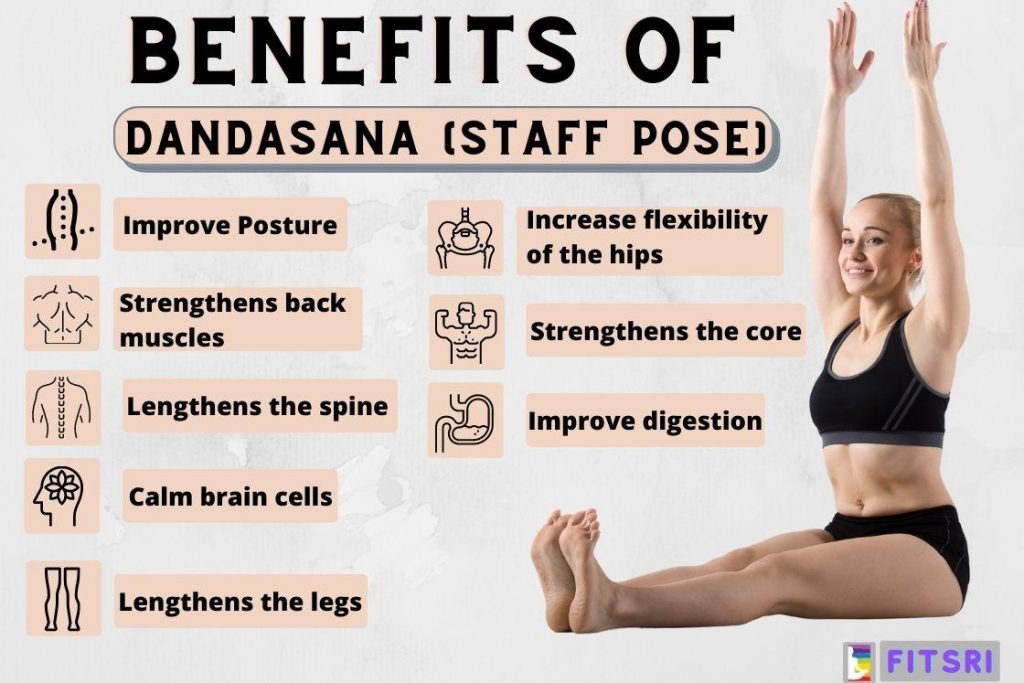
- The consistent practice of Dandasana develops awareness in the body. Evenly spread bodyweight not only hips but to your chest and thighs as well. Such an effort add on conscious awareness to the entire body.
- The Staff Pose expands your upper body upwards and the lower body forward. Consequently, bringing a good stretch to the lumbar back close to the sacral. It furthermore stretches, tones, and strengthens the back muscle.
- Practicing Dandasana gives you the feeling of grounding as your hips are flexed well enough to keep the torso perpendicular to the floor. It can balance the disturbed root chakra. Like the other seated yoga poses, this asana is the one that helps you to restore the natural shape of your spine, hips, and leg.
- As the principal focus in the Dandasana is to bring the torso perpendicular to the floor, a lot of strength is needed at the hips to help support the back hence it builds flexibility in the hip extensors and pelvic muscles.
- This posture gives the basic strength to the core by just being seated in Staff Pose. The abdominal area muscles can be worked at and strengthened. It strengthens all the major core muscles. Psoas in the hips and upper leg, the erector spinae in the lumbar back, and the transverse abdominus in the lower abdomen are all actively engaged.
- It strengthens the pelvic floor muscle and promotes the proper blood flow which also improves the function of the sciatic nerve. By the consistent practice of Dandasana, one can ease the pain of sciatica. Apart from this, it is also therapeutic for asthma as it opens up a chest, which promotes the flow of oxygen.
- As the spine is erect in this pose, the prana or subtle energy flow from the base of the spine to the crown of the head through the chakras or energy centers. Moreover, it channelizes the energy to the whole body and relaxes the brain, nervous, and endocrine system. To experience the flow of prana, you need a consistent practice of this pose and that for extended periods.
